-
Mac-Trackpad-Gesten: Schneller und flüssiger arbeiten
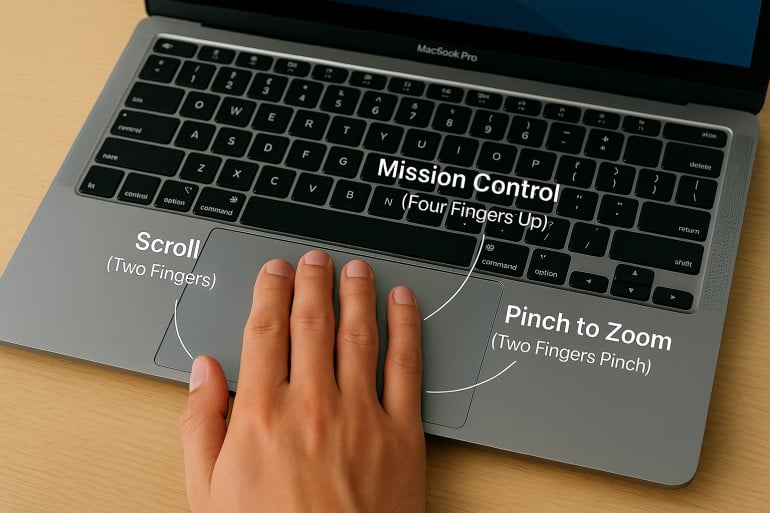 Bild erstellt von ChatGPT
Bild erstellt von ChatGPTNutzen Sie Mac‑Trackpad‑Gesten bereits optimal? Neben der Navigation gibt es über ein Dutzend integrierte und benutzerdefinierte Multi‑Touch‑Gesten, die Ihren Workflow und Ihr Surferlebnis intuitiver, effizienter und persönlicher machen.
Ein gezieltes Tippen oder Wischen kann Aufgaben sofort ausführen und Ihnen die Navigation durch Menüs, das Minimieren von Apps und mehrstufige Befehle ersparen – und damit Zeit sparen.
In diesem Leitfaden finden Sie eine umfassende Einführung in Trackpad‑Gesten für den Mac – inklusive eines Abschnitts zu Magic‑Mouse‑Gesten. Von den Grundlagen bis zu fortgeschrittenen Tipps: Erfahren Sie, wie Sie Befehle an Ihren Workflow anpassen.
Read More… -
Die besten E‑Mail‑Apps für den Mac: Top‑10‑Clients im Test

Bild: Erstellt mit Dall-EErfüllt Ihre aktuelle E-Mail-App Ihre Anforderungen? Steigert sie Ihre Produktivität, optimiert sie Ihre Kommunikation und macht Ihren Arbeitsablauf schneller und effizienter? Oder behindert sie diese Prozesse und frustriert Ihren Fortschritt? Die richtige E-Mail-App in Ihrem Tool-Stack ist entscheidend für den Geschäftserfolg. Doch bei all den verfügbaren Optionen – welche sind die besten E-Mail-Apps für den Mac?
Hier stellen wir die Top 10 E-Mail-Clients für den Mac vor, erläutern ihre Besonderheiten und listen ihre Vor- und Nachteile auf. Ob Ihre Anforderungen relativ überschaubar sind oder Sie umfassende Ansprüche an Ihr E-Mail-Tool stellen – unsere Liste hat für jeden etwas dabei.
-
Bildschirmzeit auf iPhone, iPad & Mac: Leitfaden 2025
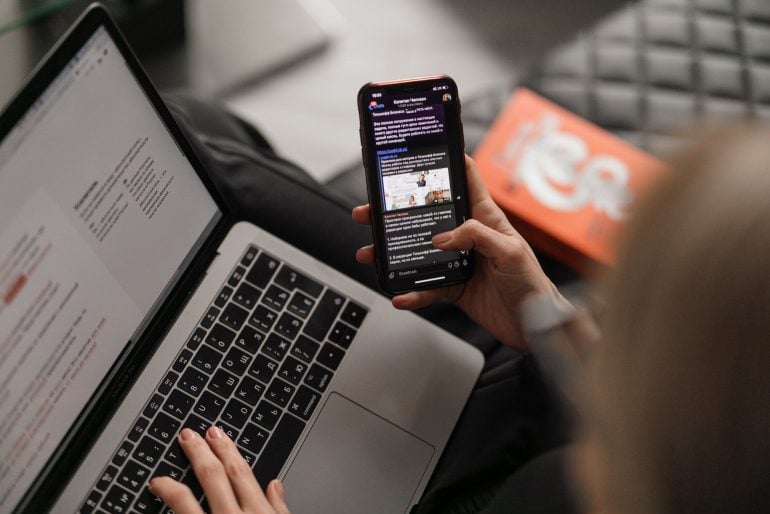
Es versteht sich fast von selbst: Ohne unsere digitalen Geräte könnten wir heute kaum leben. Sie sind zu einem unverzichtbaren Bestandteil unseres Privat- und Berufslebens geworden und verbinden uns aus den unterschiedlichsten Gründen täglich unzählige Male mit Freunden, Familie, Kolleginnen und Kollegen – und dem Rest der Welt.
Wie oft genau am Tag? Einer aktuellen Umfrage zufolge haben Smartphone-Nutzer in den USA im Jahr 2021 ihre Handys im Schnitt alle vier Minuten überprüft – ein deutlicher Anstieg gegenüber einer Studie aus dem Jahr 2019, die diesen Wert auf alle zehn Minuten bezifferte. Egal, wie unsere Gewohnheiten aussehen: Wer seinen Bericht zur Bildschirmzeit (Screen Time) ansieht, wird vermutlich feststellen, dass er oder sie mindestens einen Monat pro Jahr am Smartphone verbringt – vielleicht sogar mehr.
Doch ist jede dieser Interaktionen sinnvoll? Nutzen wir unsere Zeit produktiv – zum Lernen, Arbeiten und zur Unterhaltung –, oder vertreiben wir uns nur die Stunden? Wo verläuft bei Smartphone, Tablet und Computer die Grenze zwischen Hilfe und Ablenkung, und kann das Bewusstsein für die eigene Bildschirmzeit helfen, die Smartphone-Nutzung besser zu steuern?
Sehen wir uns an, wie die Überwachung Ihrer Apps mit Bildschirmzeit (Screen Time) auf dem iPhone Ihr Zeitbewusstsein schärfen und so Ihre Produktivität steigern kann. Außerdem klären wir, welche Alternativen es gibt. (Spoiler: Ja, es gibt welche!)
-
Bildschirmzeit am Mac: Alles, was Sie wissen müssen
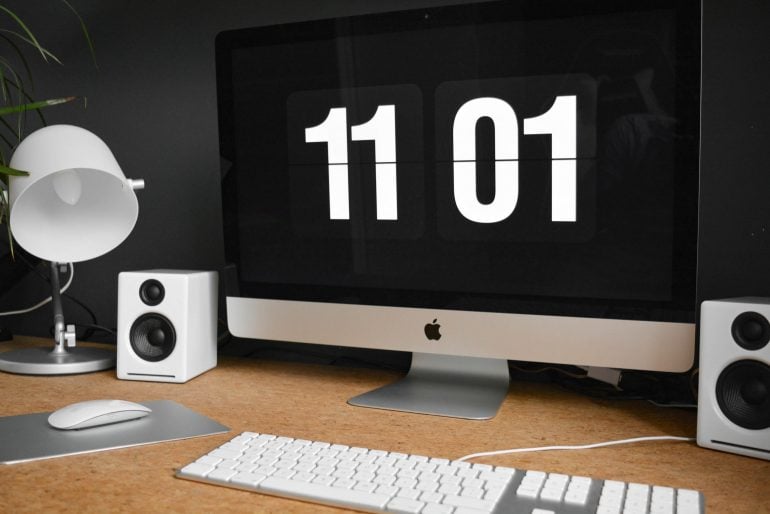 Bildquelle: Damian Patkowski
Bildquelle: Damian PatkowskiWer weiß, wie er seine Zeit verbringt, kann produktiver und fokussierter arbeiten. Indem wir Verhaltensmuster erkennen, finden wir die richtige Balance zwischen verschiedenen Aktivitäten. Doch woher wissen wir, wohin unsere Zeit fließt? Ein Zeiterfassungstool wie Bildschirmzeit für Mac ist ein guter Anfang. (Aber nicht die einzige Option!)
Bildschirmzeit war zunächst eine Funktion für iPhone und iPad, ist aber schon seit einiger Zeit auf allen Apple-Geräten verfügbar, einschließlich Macs. Die Bildschirmzeit auf dem Mac erschien erstmals mit macOS 10.15 Catalina und ist in allen nachfolgenden Versionen enthalten, darunter macOS 11 Big Sur, macOS 12 Monterey und macOS 13 Ventura.
-
Zeitaudit: So finden Sie heraus, wo Ihre Zeit bleibt
 Bild: Studio Republic
Bild: Studio RepublicWo bleiben nur die Stunden? Warum haben Sie das Gefühl, den ganzen Tag konzentriert gearbeitet zu haben – und doch nur einen einzigen Punkt auf Ihrer To-do-Liste abgehakt? Hat diese Aufgabe wirklich nur ein paar Stunden gedauert, wie geplant? Oder waren es vielleicht mehr? Genau zu wissen, wie Sie Ihre Zeit an einem beliebigen Tag verbringen, ist gar nicht so einfach. Zum Glück hilft ein Zeitaudit.
Ein Zeitaudit bedeutet, die Stunden und Minuten Ihres Arbeitstags zu protokollieren. Es macht sichtbar, wofür Sie Ihre Zeit aufwenden, und liefert wertvolle Einblicke, mit denen Sie Fokus und Produktivität steigern, Burnout vorbeugen und Ihr Geschäft besser führen.
In diesem Artikel beleuchten wir die wichtigsten Aspekte von Zeitaudits – ihre Vorteile und wie Sie eines durchführen.
-
The Best Writing Apps: Mac Tools That Make Writing Easier

Image: William Fortunato
Writers write, so the saying goes. It’s overused advice, but if you’ve ever tried to produce an original piece of writing of any length, you’ll be familiar with its accuracy. While it can be tempting to focus on researching and planning your work, or exploring your publishing options, ultimately, the most important thing you can do is put pen to paper — or rather, fingertips to keyboard. Writers write: without the writing, none of the other pursuits matter. Fortunately, there are several tools designed to help you do exactly that. And our review of the best writing apps is here to help.
If you’ve only ever used word processors like Word and Google Docs, you may think that they’re sufficient. And they certainly have their place for day-to-day tasks and short pieces of work. However, if you’re venturing into the land of long-form fiction or non-fiction, you’ll quickly find that you need a more comprehensive solution. Something that helps you store and access your research. That allows you to plot out your narrative and character development. That gives you a place to jot down useful ideas. And helps you structure your story into easy-to-navigate chapters or scenes.
You need a proper writing tool. Not a word processor or a research or note-taking app. But rather a Mac-native solution that is designed to help you bring your creative vision to life.
-
Dictation on Mac: How to Use Talk-to-Text & the Best Dictation Apps (2026)

Image: MART PRODUCTION
If efficiency and productivity are high on your list of priorities, you should be talking to your Mac, not typing on it. In recent years, dictation on Mac has evolved from a novelty feature to an essential time hack. And today everything from simple to-do notes to large emails and reports can be drafted with dictation software.
Here, we help you navigate this growing trend. How do you enable Mac dictation software? Should you use built-in or third-party solutions? And what are some of the best Mac dictation apps on the market?
Let’s get started.
-
Die 11 besten Zeiterfassungs-Apps für Mac: Eine umfassende Kaufberatung
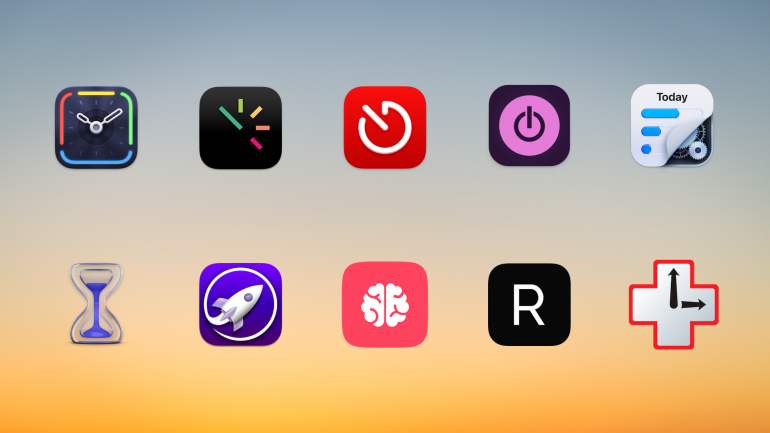
Hintergrundbild: César Couto; Icons: die jeweiligen App-EntwicklerWissen Sie wirklich, wie Sie Ihre Zeit verbringen? Wenn Sie zurückblicken auf ein gerade abgeschlossenes Projekt, haben Sie dafür wirklich die drei Stunden gebraucht, die Sie glauben, oder waren es vielleicht doch nur zwei Stunden – und die letzte Stunde haben Sie mit der Beantwortung von E-Mails verbracht? Der einzige Weg, sicherzustellen, dass Sie wissen, wie Sie wirklich Ihre Zeit verbringen, ist die Verwendung einer der elf besten Zeiterfassungs-Apps für Mac, die wir unten aufgelistet haben.
Die Wahl der richtigen App hängt davon ab, was Sie benötigen – jede App ist geringfügig anders. Während einige Ihre Aktivitäten automatisch erfassen und sorgfältig festhalten, welche Webseiten und Dokumente Sie verwenden, lassen andere Sie Ihre Zeit manuell protokollieren. Einige eignen sich besonders gut für Freelancer und kleine Unternehmen, während andere eher für größere Unternehmen entwickelt wurden.
Lesen Sie den Rest dieses Ratgebers für einen Überblick über den gesamten Markt der Mac-Zeiterfassungs-Apps im Jahr 2026!
-
Time Management Matrix: Turn Chaos into Clarity
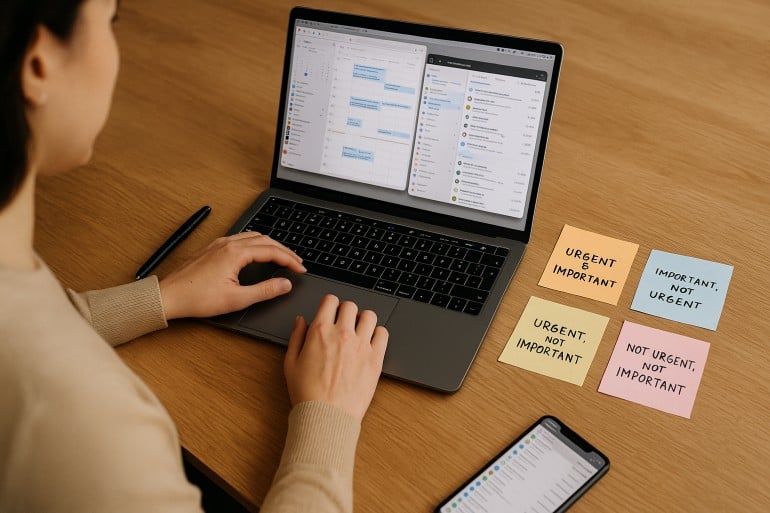 Image: ChatGPT
Image: ChatGPTTake a look at your to-do list. What does it hold? Pesky chores of little value. A few must-get-done-today tasks. Medium-sized jobs that need a little planning. Heavy duty projects that are time and resource intensive. Likely, most days will involve some or all of the above. But whether you manage to tackle the right activities in the right order will depend on how you prioritize your work and how you manage your time. Looking for a little help with both? The time management matrix might be just what you’re after.
The time management matrix is a powerful tool designed to organize your tasks based on their urgency and importance. It’s all about helping you focus on the activities that matter most to your personal and professional success. And identifying and reducing the time spent on those that get in the way of your progress.
Here, we define what a time management matrix is, explore its advantages and features, and offer a step-by-step guide on creating one of your own.
Quick Summary: What You’ll Learn - What the time management matrix is and how it categorizes tasks by urgency and importance
- The major advantages of using this approach
- The key differences between the four quadrants and practical examples of each
- Why focusing on Quadrant 2 is the secret to long-term success
- How to create and implement your own time management matrix with a practical step-by-step guide
- Expert tips for maximizing the effectiveness of your matrix
- How automatic time tracking tools like Timing can enhance your matrix by revealing exactly where your time goes
-
Time Theft Is Real – And It’s Costing You More Than Time

Image by: ChatGPTYou may not realize it, but time theft is costing your business and not in small change. The phenomenon manifests in the gaps between tasks, getting stuck in your inbox, and all the small administrative time sinks that never make it onto your invoice.
Unlike traditional workplaces, where time theft implies you’re deliberately slacking off, as a freelancer or solopreneur, it’s the opposite. Time theft is usually unintentional. Instead of shirking your responsibilities, you might find yourself guilty of falling into a cycle of performative productivity or context switching.
Both reduce your capacity for impactful input. Without visibility into how you’re spending your time, you risk loss of revenue — and miss out on opportunities for sustainable business growth and the freedom to step away from your laptop without guilt.
Below, we’ll walk you through what time theft really looks like when you’re working for yourself, and how to get your time back by building a healthy accountability system without invasive micromanagement methods.
